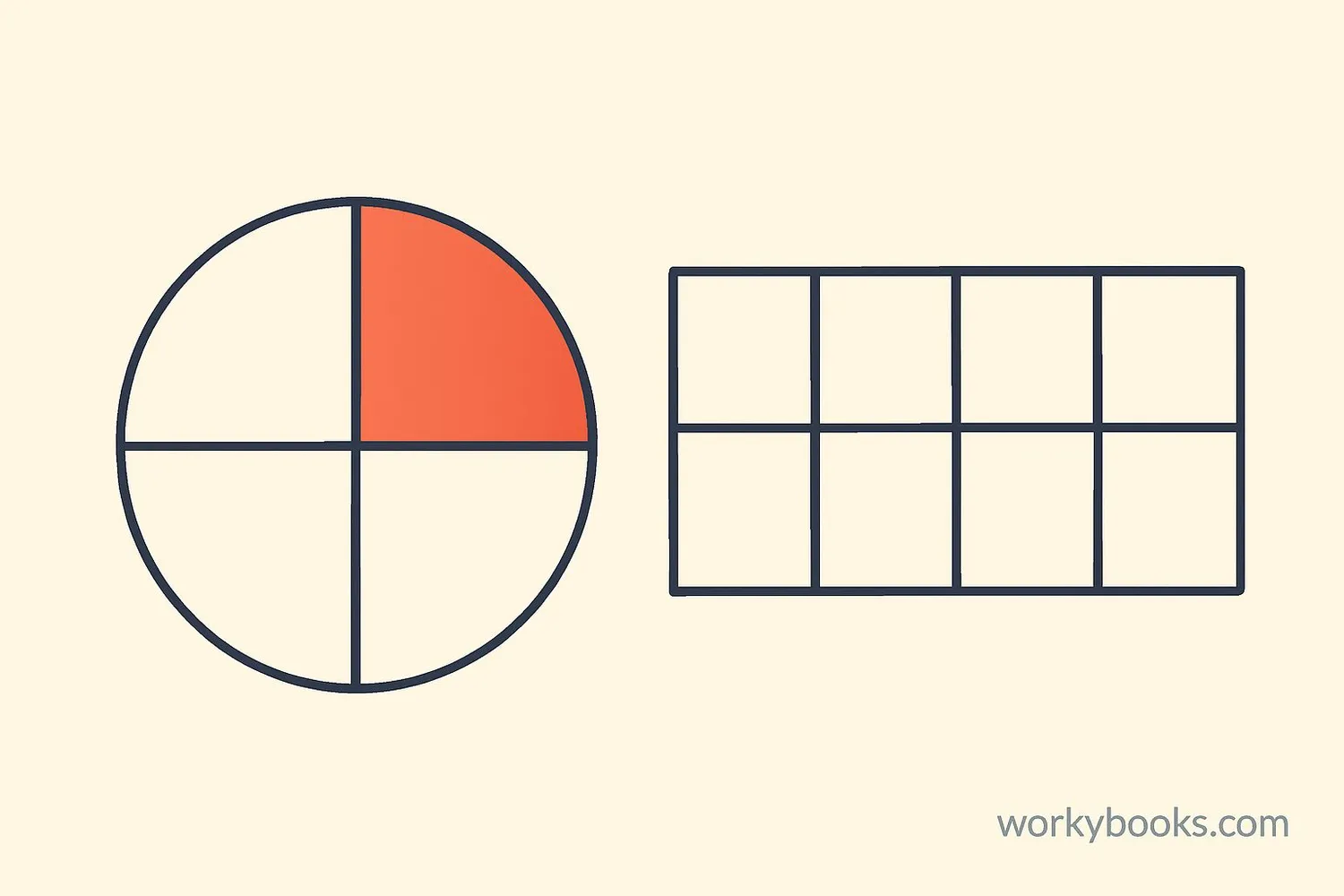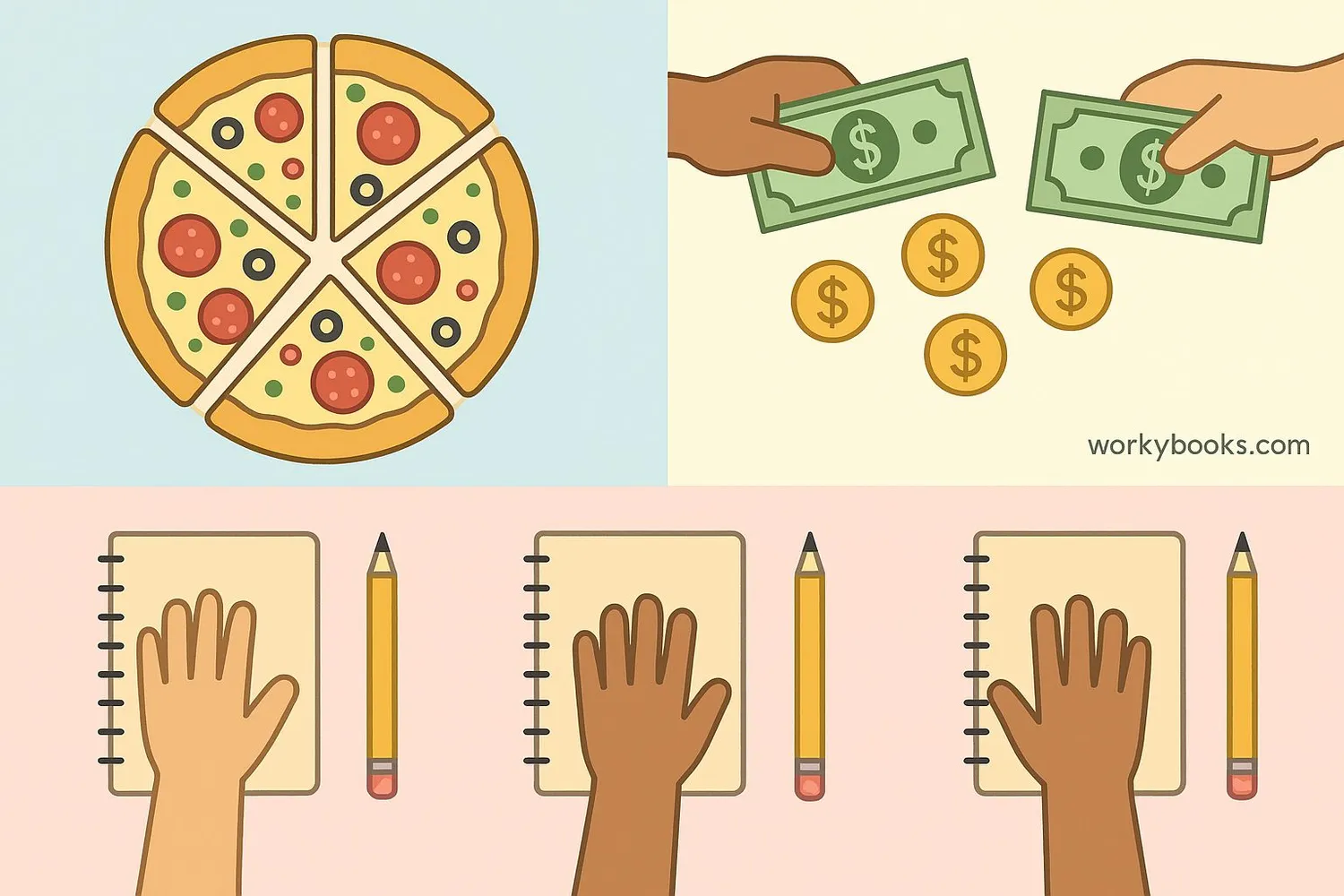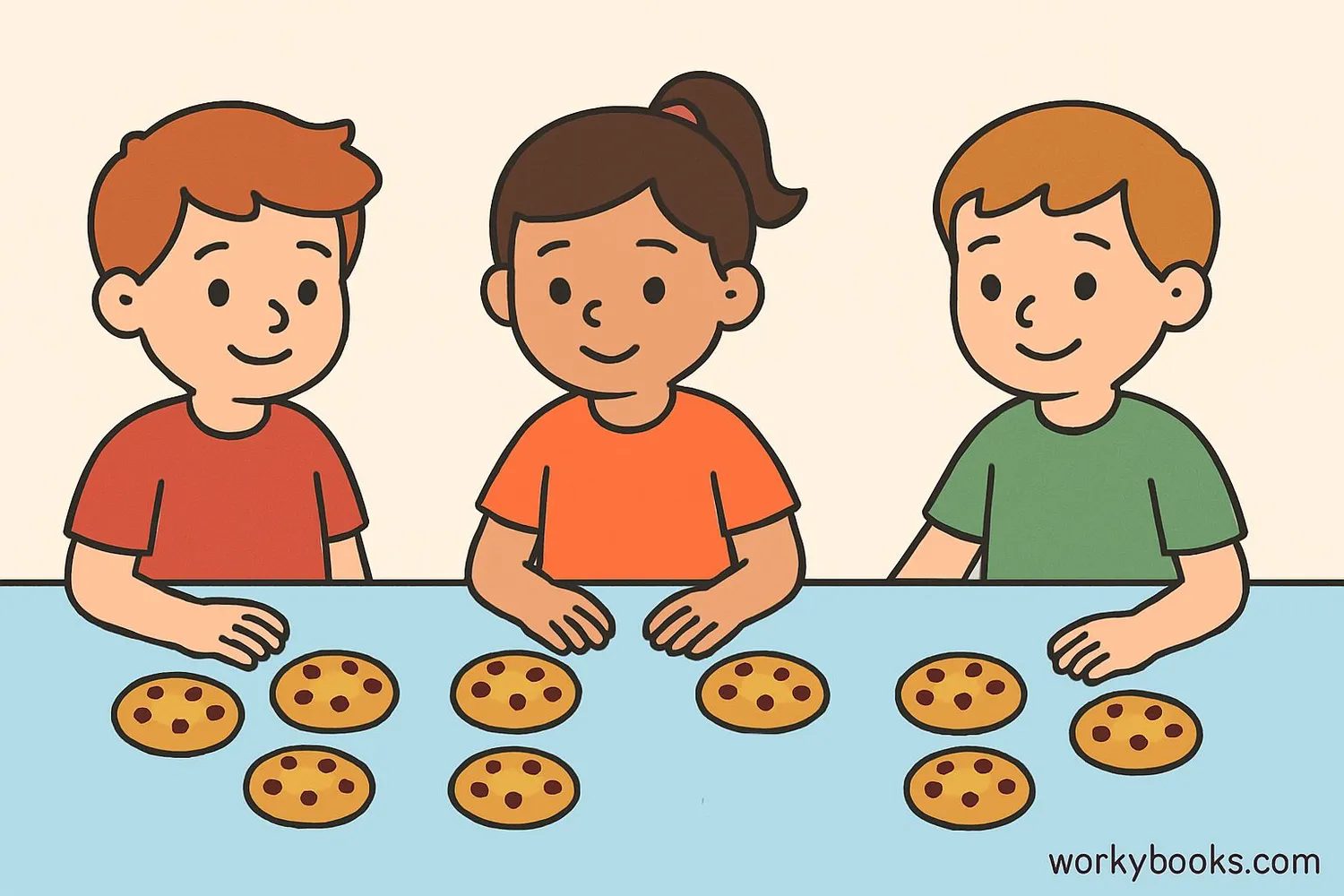Equal Shares - Definition, Examples, Quiz, FAQ, Trivia
Learn about division, fractions, and fair sharing with easy explanations and practice activities
What are Equal Shares?

Equal shares mean dividing something into parts that are exactly the same size. When we share things equally, everyone gets the same amount. This is an important math concept that helps us understand division and fractions.
Think about sharing a pizza with friends. If you cut it into equal slices, everyone gets the same amount of pizza. That's what equal shares means!
We can divide shapes, objects, or amounts into equal parts. The parts must be identical in size or value to be considered equal shares.
Key Concept
Equal shares are parts of a whole that are exactly the same size. When we divide something into equal shares, we're creating fair portions.
Division Using Models

We can use models to help us understand division and equal shares. Models are visual representations that make math concepts easier to understand.
Common models for division include:
- Arrays: Arranging objects in rows and columns
- Equal Groups: Dividing objects into groups with the same number in each
- Number Lines: Jumping equal distances on a line
- Area Models: Dividing shapes into equal parts
Array Model Example
If we have 15 stickers and want to put them into 3 equal groups, we can arrange them in an array:
15 stickers divided into 3 rows of 5, showing 15 ÷ 3 = 5
Model Tip
Using models helps us see what division means. We can physically group objects or draw pictures to understand equal sharing.
Real-World Examples

Let's practice equal sharing with some real-world examples:
Example 1: A pizza has 8 slices. If 4 friends share it equally, how many slices does each get?
Solution: 8 ÷ 4 = 2 slices each
Example 2: You have 24 crayons to share equally among 6 students. How many crayons does each student get?
Solution: 24 ÷ 6 = 4 crayons each
Example 3: A class has 30 students. The teacher wants to make 5 equal groups for an activity. How many students will be in each group?
Solution: 30 ÷ 5 = 6 students per group
Example 4: You have $15 to spend on gifts for 3 friends. If you spend the same amount on each friend, how much can you spend per gift?
Solution: $15 ÷ 3 = $5 per gift
Practice looking for equal sharing situations in your daily life - sharing snacks, dividing toys, or grouping items!
Real-World Tip
Equal sharing helps make sure everyone gets a fair amount. We use this concept every day without even realizing it!
Equal Shares Practice Quiz
Test your understanding of equal shares with this 5-question quiz. Choose the correct answer for each question.
Frequently Asked Questions
Here are answers to common questions about equal shares:
Math Trivia
Discover interesting facts about math and sharing:
Ancient Sharing
The concept of equal sharing dates back thousands of years. Ancient civilizations like the Egyptians and Babylonians used early forms of division and fractions to distribute food and resources fairly among people.
Animal Math
Some animals understand basic concepts of equal sharing! Studies show that capuchin monkeys and chimpanzees notice when rewards are distributed unequally and will protest against unfair treatment.
Space Rations
Astronauts use equal sharing concepts when planning meals for space missions. Food must be carefully divided into equal portions to make sure there's enough for everyone throughout the entire mission.
Largest Shared Pizza
The world's largest pizza was made in Rome, Italy in 2012. It was over 13,000 square feet! If divided into equal shares of 1 square foot each, it could have served over 13,000 people.






